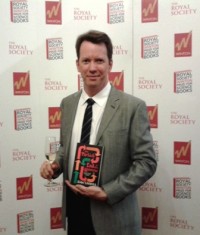Tag archives: out and about
Cold city, hot science

Downtown Chicago rises above a snowy Grant Park.
By Margaret Harris in Chicago
It’s ice cold outside (–16 °C the last time I checked), but Chicago is still a hot ticket for scientists this week as the capital of the American Midwest prepares to host the 2014 meeting of the American Association for the Advancement of Science (AAAS).
As usual, there are plenty of fascinating talks planned for the meeting, which runs from today through Monday. Looking through the schedule just now, I’m pretty sure I could fill all five days with seminars on scientific entrepreneurship, policy and communication – although if I did, I’d miss out on some great physics topics such as dark-matter detection, quantum cryptography and next-generation materials for batteries. Which would be a shame.
I’ll be posting regular updates throughout the conference here on the physicsworld.com blog, and I’ll also be live-tweeting a few of the talks (only the really interesting ones, I promise) as @DrMLHarris on Twitter. So check back soon for more on the 2014 AAAS meeting.
View all posts by this author | View this author's profile
Boson book scoops Royal Society prize
By Margaret Harris
It’s been a good year for particle-physics prizes, and the Higgs-stravaganza continued last night in London as the cosmologist and author Sean Carroll walked away with the £25,000 Royal Society Winton Prize for his book The Particle at the End of the Universe.
Carroll’s book – which includes a behind-the-scenes account of how the Higgs boson was discovered, as well as explanations of the Higgs field and other concepts – was the “unanimous” choice of the prize’s five-member judging panel. Uta Frith, an emeritus professor of cognitive psychology at University College London and the judging panel’s chair, called The Particle at the End of the Universe “a real rock star of a book,” and cited Carroll’s energy and passion for his subject among the reasons why it beat out the five other books on the shortlist.
View all posts by this author | View this author's profile
The great physics bake-off
By Matin Durrani
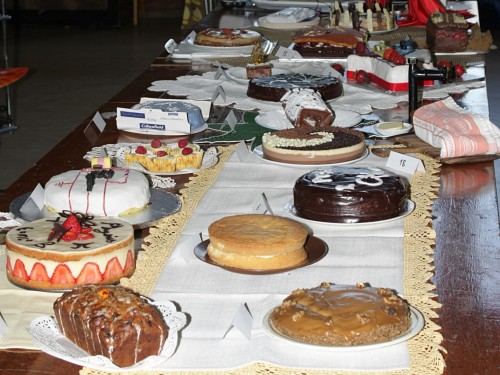
Cakes from the Great Physics Bake Off, with the overall winner second bottom on the left. (Courtesy: Chris Hodges)
And so to the physics department at Bristol University last night, which played host to “The Great Physics Bake Off” organized by PhD students Janina Möreke and Sara Carreira. The aims were simple: to showcase the cake-baking talent of the department, have some fun, and at the same time raise money for IOP for Africa – the scheme run by the Institute of Physics, which publishes Physics World, to boost physics education in some of the poorest countries in the world.
View all posts by this author | View this author's profile
New diamond centre cuts the ice
By Margaret Harris
The Harwell Science and Innovation Campus added another jewel to its crown yesterday when the industrial-diamonds firm Element Six officially opened its £20m new R&D facility on the Oxfordshire site, which is already home to organizations such as the Rutherford Appleton Laboratory and the UK’s flagship synchrotron, the Diamond Light Source.
I’d heard about Element Six’s plans thanks to this article, which appeared in the careers section of June’s Physics World. The author, Stephanie Liggins, is a physicist who joined Element Six after completing her PhD at the University of Warwick, and towards the end of the article she mentioned that she would soon be moving to the company’s new Global Innovation Centre – which she described as “the world’s largest synthetic-diamond research and development facility”.
View all posts by this author | View this author's profile
Bright spots in the Euro-gloom

European Parliament in Brussels. (iStockphoto/Franky De Meyer)
By Margaret Harris in Brussels
For an event built around celebrating Europe’s best scientific spin-out companies, the Academic Enterprise Awards got off to a downbeat start. “Europe is lacking growth, lacking jobs and lacking entrepreneurial appetite,” declared Joanna Drake, director of small and medium-sized enterprises (SMEs) within the European Commission. Such enterprises “have a difficult life, and this is getting worse, not improving” agreed the event’s second speaker, MEP Maria Da Graça Carvalho of Portugal. Then there was Roland Siegwart, vice-president for research and corporate relations at ETH Zurich. In a splendid bit of understatement, he lamented the fact that many bright scientists at his university “have a somewhat not awake entrepreneurial spirit”.
View all posts by this author | View this author's profile
What happened to nuclear electrons?
By Hamish Johnston at the 2013 CAP Congress in Montreal
Sometimes I think that physicists can dwell too much in the past. Scientific papers, for example, often begin with a potted history of the field and it’s only in the second page that something new is mentioned.
The first medical X-ray…
By Hamish Johnston at the 2013 CAP Congress in Montreal
Jean Barrette has one of the best jobs in the world as far as I am concerned. The retired nuclear physicist is curator of the McPherson Collection of physics instruments at McGill University here in Montreal.
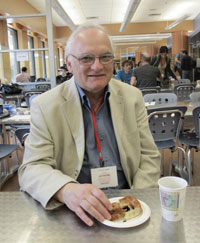
Jean Barrette has a great job.
This morning in the “History of Physics” session at the Canadian Association of Physicists (CAP) Congress, Jean gave a talk that featured many of the beautiful experiments – lots of brass and polished hardwood – in the collection.
The collection was made possible by the Canadian physicist Anna McPherson, who left a sizeable sum to the university when she died in 1979.
One of the highlights of the talk was what is surely the first-ever medical X-ray, which was taken in 1896 just six months after X-rays were first discovered. Taken at McGill, it shows a bullet lodged in the leg of a shooting victim.
During his talk, Jean asked for help in identifying a mysterious piece of apparatus in the collection that so far he had not been able to identify. Jean is going to send me a picture and I’ll post it in an upcoming blog entry.
South Korea – day six
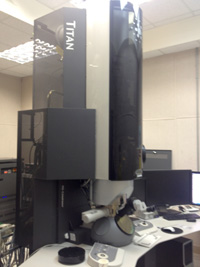
A transmission electron microscope at KIST.
By Michael Banks
The first thing Kyung-Ho Shin, vice president of international affairs at the Korean Institute of Science and Technology (KIST), passed me when we met in the lobby of my hotel today was an umbrella.
Today Seoul has had a very good watering, but after the recent warm weather the change could be seen as being welcome.
In the morning’s pouring rain, I visited KIST, which was created in 1966 to help commercialize basic research. The 2000 or so researchers based at KIST carry out work in areas from neuroscience and fuel cells to robotics and medicine.
View all posts by this author | View this author's profile
South Korea – day five

The Gyeongbokgung.
By Michael Banks
Today I was traveling back from Pohang where I spent the weekend after an busy few days in Daejeon.
Daejeon is certainly an impressive place to do science, being home to no fewer than 60 research centres. Unfortunately, in the limited time I had I could only visit a couple, including the Korean Research Institute of Standards and Science and the National Fusion Research Institute (NFRI).
View all posts by this author | View this author's profile
South Korea – day three
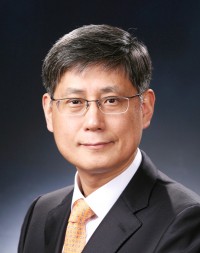
Sang-il Park, Park Systems boss.
By Matin Durrani
Day three for the Physics World editorial visit to South Korea saw news editor Michael Banks spend the day at the KSTAR fusion facility while I was at atomic-force microscope (AFM) manufacturer Park Systems in Suwon.
South Korea is, of course, a key player in fusion science, being a long-standing member of the ITER experiment being built in the south of France. But as Michael is now in the south of the country – in Pohang to be precise – I haven’t had full details of how his visit to KSTAR went. He did, however, e-mail me to say that he’d asked his contact at the lab whether they’d ever had any other visits from journalists. She said they hadn’t, but there was once this very famous scientist who had taken a tour of KSTAR – step forward none other than the physicist who’s on just about every UK TV science show at the moment: Brian Cox.
